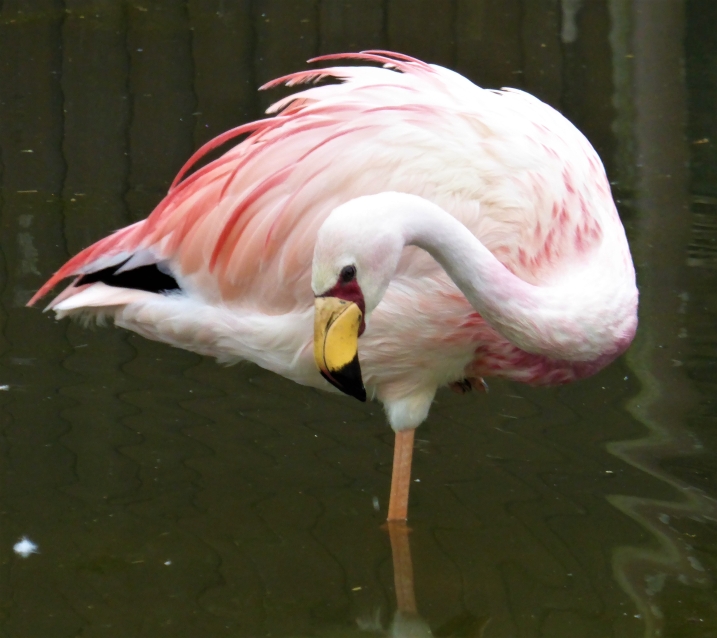Home improvements for flamingo happiness!
April is always a special month for flamingos because it's the time of International Flamingo Day, which occurs on the 26th April. So in this celebratory Flamingo Diary, we're looking at some of the ways in which we take extra care of our favourite pink birds at WWT. And this can involve shovelling and pushing around several tonnes of sand!
Visitors to WWT Slimbridge may have spotted that the Caribbean flamingos have some lovely new sand all over the islands and back section of their enclosure. The hard work of the living collections team at WWT Slimbridge means that the islands should look more inviting to the flamingos when nesting. Of course, nothing is guaranteed and flamingos can be notoriously fickle when deciding to nest or not, but these "home improvements" should certainly create more positive vibes in the flock to think about nesting.
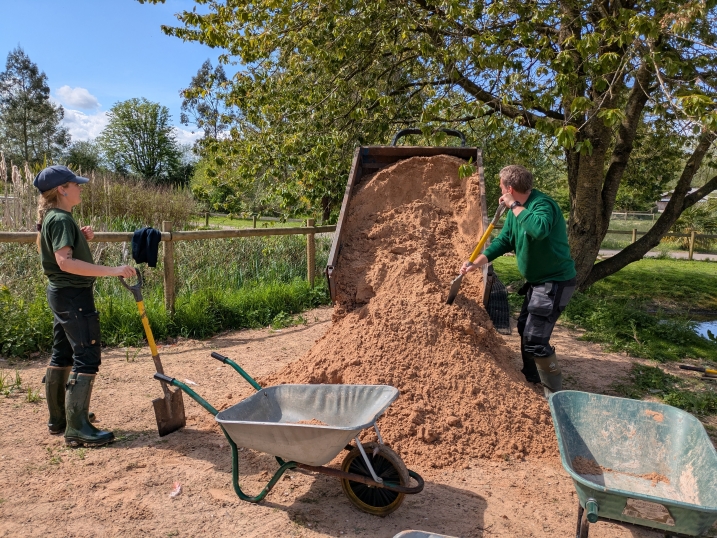
What a lot of sand! It takes many tonnes, and a lot of hard work, to manage the nesting sites of WWT flamingos!
The living collections team had already shovelled in a whopping 29 tonnes of sand into the back of the enclosure to provide a comfortable place for the flamingos to stand, rest and sleep. As a flamingo flock likes to be together, it is important that all individuals can find a spot to stand and preen, or snooze and rest, that is soft and comfortable. Using a deep layer of sand is one of the best ways that we can protect flamingo health and welfare, and so all of the flocks get new sand when the living collections staff believe it is time for a refresh.

Time for some renovations! The dedication of the living collections team to their birds' wellbeing means they put in the extra effort to shove, push, shovel and spread so much sand into the right places for the birds.
To encourage breeding for this summer, more sand was needed in the Caribbean flamingo enclosure. Another 29 tonnes was ordered and then manoeuvred into the birds' enclosure. A whole team effort! The flamingos housed safely indoors whilst this procedure was taking place.
Once the sand has arrived in the enclosure, by tractor and trailer, it moved around by the living collections staff to get the right depth and distribution on the nesting islands. The birds will make their own nest mounds, but it can help to give them enough sand to play with so they get the right idea. The estuary sand that is used for the flamingo enclosures has quite a large grain. This means that it is free draining, which is important for good foot health, and for creching areas (the nursery areas of the enclosure where a flamingo flock gathers its young) because it can keep the chicks clean and dry.
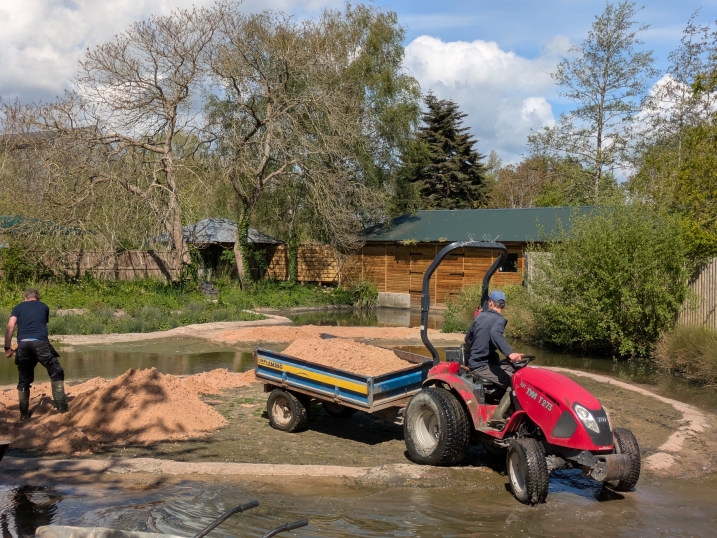
Excellent tractor driving skills are required for dumping sand onto the nesting islands in the Caribbean flamingo enclosure. Once the sand has been delivered, it can be raked into shape.
Raking over the sand means the depth can be assessed and any lumps or bumps in the terrain filled in - giving the birds an even surface to walk on. As the base substrate in all of the flamingo enclosures is the clay mud of the River Severn, the birds can work the new sand together with this mud to create their nest mounds. Flamingos are excellent engineers in this regard - something I have discussed before in these flamingo diaries.
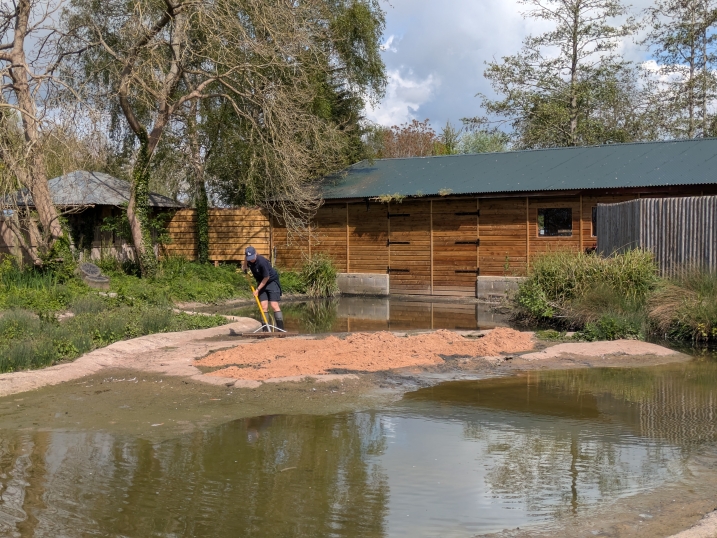
The sand is spread around the centre of the island, just away from the edges, so that the birds do not push it all into the water. Even thought many tonnes of sand were used to cover the islands, it doesn't always look that much when in place.
With the new sand in place, and everything made as inviting as possible for flamingo nesting, the flock were given access back outside to inspect their newly sanded home. Let's all keep our fingers crossed that these renovations will result in the pitter patter of tiny flamingo feet this summer!
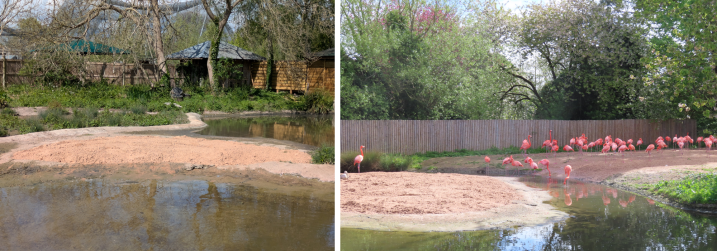
The finished product! Complete with inspections being done by the flamingos! I'm sure they appreciate all of the hard work of their keepers in providing this fresh, new sand...


